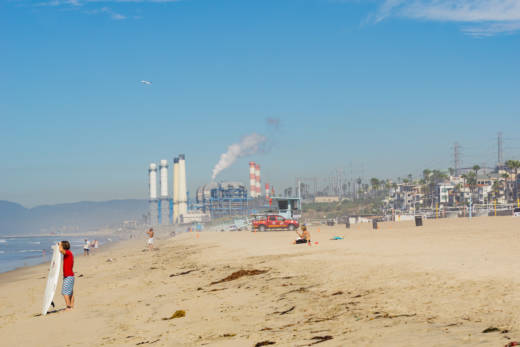In the cap-and-trade system, major polluters must either produce fewer greenhouse gases to comply with California’s emissions caps or buy credits to offset their excess emissions from companies that pollute less. Credits are traded at state-sanctioned auctions and on secondary markets. And the state gives some free to utilities, natural-gas suppliers and industries that are vulnerable to out-of-state competition.
Some companies have not yet needed to use up the allowances to stay within state emissions limits and probably won’t have to in the next couple of years, according to some analysts, who estimate there are hundreds of millions of unused credits in the system.
The result is a glut of credits that could allow businesses to keep polluting past state limits in later years, after the overall cap becomes more restrictive. Unless the oversupply is addressed, experts say, polluters will have no incentive to cut emissions to required levels by 2030; instead, industries could continue polluting and use banked allowances to offset their emissions and technically keep them under the cap.
The state Legislative Analyst’s Office foresees a reckoning, estimating that because of excess allowances, actual emissions could be as much as 30 percent over the statewide target by 2030.
One analyst likened the problem to a game of musical chairs that starts with too many chairs and allows participants to save seats for later. The issue has plagued both the European Union’s carbon-trading system and the Regional Greenhouse Gas Initiative, a consortium of nine eastern U.S. states that sells credits for the electricity sector. Both markets have put policies in place to limit surpluses.
In California, lawmakers instructed the air board to examine the issue last year, and the agency has steadfastly maintained that the surplus of credits will not imperil California’s fight against climate change.
Rajinder Sahota, who oversees much of the cap-and-trade program for the air board, has testified numerous times before the Legislature on this topic. On each occasion she has assured lawmakers that the system is working.
“We do not believe that there are unused allowances in the system that will hinder our goals for 2020,” she told CALmatters.
She didn’t address how allowances might play out in subsequent years. But the agency forecasts that the state will also meet its 2030 target, when emissions limits will tighten dramatically, the number of free allowances will come down and the cap-and-trade program will expire.
Among the skeptics is Ontario’s environmental oversight agency. The commission’s annual report in January stated flatly that California has an oversupply of allowances that could last for the life of the program.
“We understand that the board believes…they don’t have an oversupply problem,” said Dianne Saxe, the environmental commissioner of Ontario. “Frankly, we don’t understand it.”
The disconnect will be addressed this week in a hearing before the newly formed Joint Legislative Committee on Climate Change Policies. The committee chairman, Assemblyman Eduardo Garcia, a Democrat from Coachella, said the air board will be grilled on how it intends to manage allowances.
“Our numbers don’t pencil out to be the same numbers they propose,” Garcia said. “We will go back and reexamine the numbers they are projecting. We have some questions about how they got there.”
Danny Cullenward is an energy economist with the climate-change think tank Near Zero and teaches environmental law at Stanford University. He’s also a member of the newly established Independent Emissions Market Advisory Committee that is charged with reviewing the mechanics of cap and trade. He says the air board not only got its projections wrong but also used an incorrect model for its calculations. The board’s most recent estimates are off by 10 percent and used a model that the agency identified in 2010 as problematic, he said in an interview.
“I can’t emphasize enough, this is a basic question of scientific integrity,” Cullenward said. The board has been reluctant to engage outside experts on the issue of allowances, “in a rush to justify that this is not a problem,” he said.
Sahota said external studies have not taken into account that allowances are set aside if they have gone unsold for 24 months—a “self-ratcheting mechanism,” she said, that prevents a glut on the market. The Canadian study, she said, relied on a flawed analysis conducted by Chris Busch, research director at Energy Innovation, a San Francisco-based climate-change and clean-energy think tank.
Saxe, the environment commissioner, stood behind the report’s conclusions, saying, “We did our own analysis.”
Busch, who was among the first researchers to identify the oversupply problem, is a longtime supporter of California’s cap-and-trade system, which he calls the best designed in the world. Busch said he used the air board’s own data to reach his conclusions about allowances, which he said were conservative.
“I sought to engage the air board to evaluate what they thought of the numbers,” he said. “They didn’t want to engage.”
